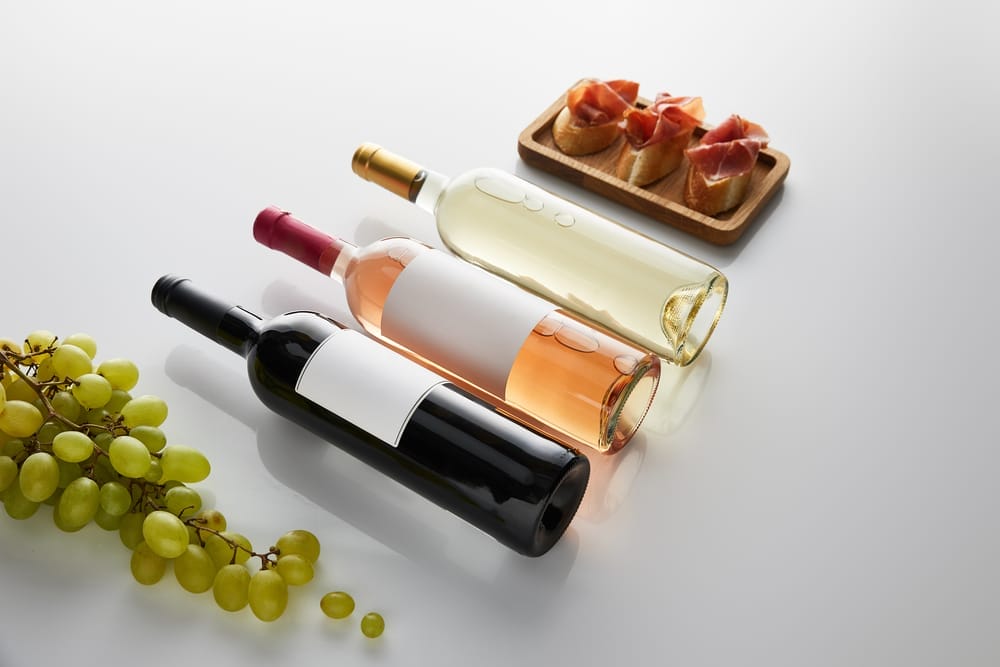Finding the right wine to fill your glass can be a real challenge!
Searching for a brand that is inclusive for all wine drinkers is a task in itself. Is there a wine producer that combines fun, approachability, and diversity in their wine selection so that all palates are left satisfied?
Picture this: You’re looking in the wine aisle, only to be overwhelmed with the different brands and wine varieties that stand in front of you. There is uncertainty in what will satisfy your taste buds, or how strong each wine may be.
Selecting the wrong wine can will only cause further frustration, and actually mask what is meant to be a pleasurable wine experience!
Understanding the alcohol content in your wine and what this means for the overall experience is a puzzle that can sometimes be hard to solve.
A solution: Barefoot Wines is a brand that encompasses the values of being fun and approachable for wine drinkers!
They conquer the challenge of providing almost all varieties of wine, from lower alcohol Moscato’s to higher alcohol Zinfandel wine.
In this article, we’ll explore:
- An overview of Barefoot Wine
- The range of Barefoot wines and their alcohol content/
Let’s get into it!
Barefoot Wine Overview

Barefoot Wine has been around for 35 years. There is no doubt it has made its mark on the wine stage, with a focus on being fun and approachable for its drinkers. It holds the most awards to its name compared to any other wine brand!
Beginning in 1965, Davis Bynum created ‘Barefoot Bynum Burgundy’ in his own garage in California.
From there, the brand name changed to ‘Barefoot Cellars’, where the well-known footprint logo was introduced and gained popularity.
Following this, Jennifer Wall came into the company in 1995 and contributed significantly to the brand.
Her leadership allowed the brand to be awarded 10,000 different medals and accolades, and she remains passionate about making wine even after 25 years with the brand.
Notably, Barefoot Wine stands out as being an official sponsor of the NFL. Their aim is to make their wine enjoyable and accessible to all, which aligns with the NFL’s objectives perfectly.
The brand does not lack variety either. Barefoot Wine gives consumers a choice of reds, whites, pinks, bubbles, on-tap wine, spritzers, wine-to-go, low-calorie options, fruitsacato, and sweet wines.
This range of wine varieties available from Barefoot has ultimately given them the reputation of being an easy-to-enjoy wine brand both in the US and internationally.
Analyzing Barefoot Wine Varieties and Their Alcohol Content
As mentioned above, Barefoot Wine provides a great variety of wines to select from.
Depending on the type, the alcohol content will differ. This ultimately comes down to how certain varieties are fermented or even what grapes are used.
With this range of alcohol content amongst the wines, consumers have more options to suit their desires and preferences.
Here are the varying alcohol contents of their wines:
- Moscato 9%: Moscato is typically your lighter, crisp, and lower alcohol-containing wine. The lower alcohol content is a result of winemakers manipulating the fermentation process to ensure conversion of sugar to alcohol is stopped. This allows for a sweeter and lower-alcohol wine
- Pink Moscato 9%: Like the normal Moscato, this wine follows a similar fermentation process to allow for a sweet, lower-alcohol wine. The twist is layers of red fruit incorporated into the wine such as cherry, raspberry, and pomegranate
- Rosé 10%: The Barefoot Cellars Rosé is another one of their lower-alcohol wines. This is due to the lack of contact time with red grape skins that occur in rosé fermentation
- Chardonnay 13%: The Barefoot Chardonnay falls into what’s considered a moderate alcohol content range. The white grapes used in fermentation have less sugar than darker grapes, making the sugar-to-ethanol rate lower
- Sauvignon Blanc 13%: Like many white wines, the Barefoot Sauvignon Blanc sits in the moderate alcohol content category. Again, this is thanks to the use of white grapes and their slower conversion of sugar to ethanol.
- Riesling 8%: The Barefoot Riesling is another lower-alcohol wine variety in their selection. While some other Rieslings out there can reach 14%, Barefoot has opted for a sweeter and lower alcohol version
- Pinot Grigio 12.5%: This is another moderate alcohol content wine that Barefoot offers within their white wine variety. It tends to have a lighter and crispier finish to it
- Malbec 13.5%: Malbec, is a red wine with a moderate–high alcohol content. What gives not only the Malbec but other red wines this higher alcohol content is the more mature grapes used in production (picked later in the season). This also allows for a more complex flavor profile
- Pinot Noir 13.5%: On par with Malbec’s alcohol content is the Barefoot Wine’s Pinot Noir. The Pinot Noir contains fewer tannins, making it lighter with a hint of sweetness in it
- Cabernet Sauvignon 13%: This wine joins the moderate alcohol-containing red wines in the Barefoot collection. It has a bold, aromatic flavor profile, with fruity tones. This can help mask the higher alcohol and make it an easier drink
- Merlot 13%: Another red wine that sits in the 13% range of alcohol content is the platinum award-winning Merlot. Something to keep in mind is that the alcohol in Merlot may be easier to drink compared to other red wines due to having fewer tannins
- Zinfandel 14%: The Barefoot Wine’s red Zinfandel kicks it up a notch in terms of alcohol content. This is thanks to the overly-ripe grapes that are used in production. The raised sugar levels in the grapes ultimately allow for greater alcohol levels.
Bear in mind that on the Barefoot Wine website, there is also a 9% white Zinfandel wine available. As such, read the label carefully to ensure you are getting the right wine as alcohol content significantly differs between the two!
- Shiraz 13.5%: This Californian Syrah-style red wine also joins the moderate to high alcohol-containing wine. While Syrah from warmer climates can approach the 14.5-15.5% range, the Barefoot Wine Shiraz doesn’t hit those levels
- Rich Red Blend 13%: Encompassing the tastes of the jammy and rich flavor of black fruits is the Rich Red Blend from Barefoot Wines. With a more moderate alcohol content, there is an opportunity for sweeter aspects of the wine to shine through
- Sangria 11%: Most Sangrias should be less than 12% in alcoholic strength in order to be classified as Sangria.
As such, it’s no surprise that the Barefoot Sangria sits in the moderate to low alcohol range. This product stands out as being one of the fruitiest and most colorful drinks of their collection.
Which Variety Of Barefoot Wine Has Low Alcohol Content?

As discussed, a wine’s alcohol content is largely attributed to the fermentation process, the types of grapes used, and how ripe the grapes actually are.
In lower-alcohol wines, the sugar-to-ethanol conversion is stopped much earlier to keep alcohol levels low. This is what also achieves the sweet profile seen in lower- alcohol wines such as Moscato.
Being aware of these lower-alcohol wines and what they may mean for an individual’s wine experience is crucial.
This is especially relevant to the ‘novices’ of wine drinking, who will typically prefer the lighter and sweeter profile of these wines.
Additionally, for those who do not want high amounts of alcohol, having this information and being able to interpret it is also important.
This table outlines Barefoot Wine’s ‘low alcohol’ varieties. This category is characterized by having an ABV (alcohol by volume) of 10% or less.
| Wine variety | Alcohol content (Alcohol by volume) |
| Riesling | 8% |
| Moscato | 9% |
| Pink Moscato | 9% |
| Rose | 10% |
Final Word
Understanding the alcohol content in Barefoot Wines is crucial to ensuring a pleasurable experience when drinking from their selection.
If you are a novice to the wine-drinking game, you may be better off opting for their sweeter, lighter, and lower-alcohol wines such as the Riesling to ensure the alcohol doesn’t get the better of you!
For experienced wine drinkers who are seeking full bodied, aromatic wines, there is opportunity to delve into the higher alcohol wines such as the ‘Rich Red Blend’.
Being aware of alcohol content most importantly gives an indicator of quantities that can be consumed by each person depending on their tolerance.
Now that we have discussed varying alcohol contents in Barefoot’s wine varieties and what this may mean for an individual’s wine experience, you should be equipped to select the right wine next time you are in the wine aisle!
- Moscato vs Roscato: A Comprehensive Comparison of Sweet Wines - December 15, 2023
- Should White Wine Be Chilled? Expert Insights on Serving Temperature - December 14, 2023
- Moscato vs Riesling: A Sweet Wine Showdown - December 8, 2023







![Malbec Vs Pinot Noir: 8 Important Differences [2023] Malbec Vs Pinot Noir](https://e25kn4v6x6d.exactdn.com/wp-content/uploads/2023/09/Malbec-Vs-Pinot-Noir.jpg?strip=all&lossy=1&resize=150%2C150&ssl=1)


